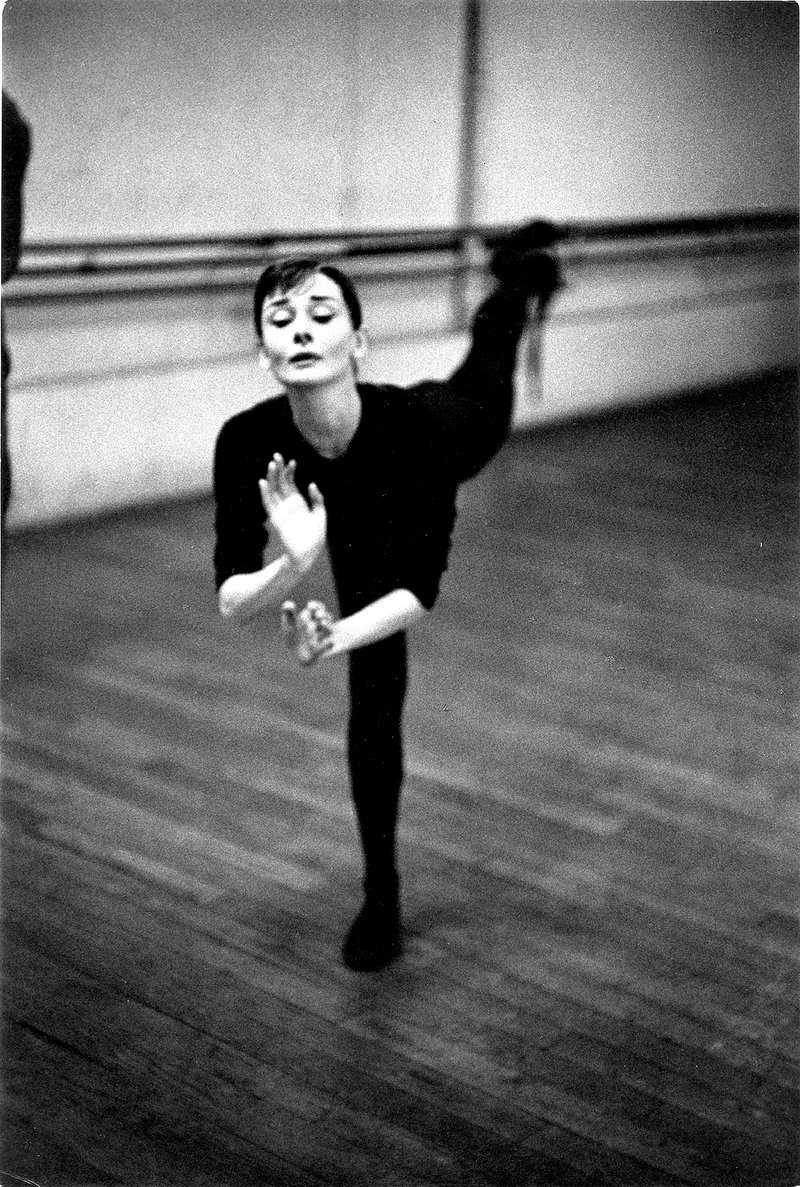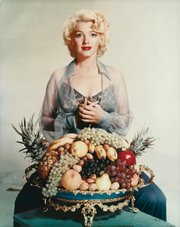On the heels of the first photography exhibit to grace the halls of Crystal Bridges Museum of American Art comes another, "Reel Women: Icons and Identity in Film."
The exhibit contains 14 images of celebrities, mainly spanning the years 1929-39, and connects art with the theme of the Bentonville Film Festival, which is to champion women and diversity in film.
FAQ
‘Reel Women:
Icon and Identity in Film’
WHEN — April 20-July 18; gallery talk May 4; silent films shown May 4 and 5
WHERE — Exhibit at Crystal Bridges Museum of American Art, films at Bentonville Public Library.
COST — Free
INFO — crystalbridges.org
The photographs feature movie stars Joan Crawford, Marilyn Monroe, Katherine Hepburn, Grace Kelly, Lauren Bacall and Audrey Hepburn, among others, and were selected from the George Eastman Museum collection in Rochester, N.Y.
"There are 14 objects in the show, and they're all of female stars," says Ali Demorotski, curator at Crystal Bridges. "A lot of them are names and faces people will recognize: Audrey, Marilyn and [Greta] Garbo, then there's a couple that aren't as familiar," such as one of a Chinese American actress and another of a Bollywood actress.
The exhibition opened yesterday at Crystal Bridges. Two silent film screenings, of "Borderline" and "Beasts of the Jungle," will take place at the Bentonville Public Library in conjunction with the exhibit during the first week of May.
"We took the approach with the idea that women and diversity have a long way to go in film and media in general, but where we are today is based on icons of the past and pioneers, some are forgotten," says Tom Hoehn, senior director for digital and social marketing at Walmart.
Hoehn previously worked at Kodak, was on the board of the Eastman Museum and was instrumental in bringing the exhibit to Northwest Arkansas.
"Crystal Bridges is the heartbeat of the community and during the one week of the Bentonville Film Festival, there's another fusion of energy," Hoehn says. "What better way to connect these two places together" than a photography exhibit of movie stars?
The images "give a foundational aspect to where things are in the [film] industry. [The subjects] have given of themselves in the past to help elevate women and diversity."
Seeing the artistic, glamorous photographs of historic film stars is a good opening act for the Bentonville Film Festival and an important reminder of how much the movie industry has changed. It's a look back on old Hollywood, the start of those projected, unrealistic images of beauty, a time when celebrities were seen as "products." And it gives perspective for how women eventually gained control over their own images.
In selecting the 14 photos to be shown in Bentonville, Crystal Bridges curators looked to the George Eastman Museum staff members' expertise about their own collection, given its large size and prestige as a world-renowned archive of photographs and motion pictures.
"We wanted a range of photos from the earlier days of Hollywood, when the studio was very controlling of the images of their stars," Demorotski says. "Things were very tightly controlled and managed."
The images are an interesting historic take on celebrities, since most of the photos were taken before the rise of the paparazzi in the 1950s, the star magazines, tabloids and eventual websites and social media accounts that give people glimpses into their lives now.
Having a little context for those images helps, Demorotski says, since the culture is now so different. The photograph of Marilyn Monroe, for instance, includes a large bowl of fruit to represent fertility, a traditional expression of gender role in the 1930s.
"It becomes this weird juxtaposition [knowing that] about this picture of a bombshell and the representative symbol of the fruitful womb, which is not what you associate Marilyn with," Demorotski says.
The image of Audrey Hepburn lends a glance behind the scenes at the movies, while she rehearses. A photo of Loretta Young captures her with her daughter, emphasizing the star's role of "woman as mother." One of Lauren Bacall pictures her hands in fists, face scowling and teeth gritted. That antithesis of the typical celebrity portrait shows, Demorotski says, the actress taking charge of her own persona. Katherine Hepburn's portrait also indicates a strong presence.
Popular among the organizers of the exhibit is a photograph of Joan Crawford at the beach with a man, the pair facing opposite directions, leaning against each other's backs.
"There's this strength you sense from her in the image during a time when you'd normally think of women receding," says Bruce Barnes, executive director of the George Eastman Museum. "There's this sense of togetherness but being independent of one another in a day when a lot of women were in a role that was secondary to men."
Viewing the two films on loan from the Eastman Museum is a unique opportunity for exhibit goers to see silent movies just as people saw them in 1913 and 1930, when they were released.
"Eastman has one of the leading collections for motion picture film in the United States," Barnes says. "It's a very important part of our mission for people to be able to see the films."
Seeing "Borderline" and "Beasts of the Jungle" will allow those attending the film festival to have a greater understanding of the new films they'll see this year.
"If you ignore the past, you don't get to see the entire growth of the industry," says Jared Case, head of collection, information, research and access in the moving image department of the Eastman Museum. "By showing films from the past alongside films from now, you see the influences, a conversation between filmmakers of the past and now.
"You can see what filmmakers saw, the films [they] made and what influenced it. Having them side by side enriches the experience of both."
"Borderline" features great African American actor and singer Paul Robeson in a story about an interracial affair between two couples in a European city. It uses avant garde experimental techniques (quick cuts, close ups, overhead angles) to tell the story.
Showing the 1913 film "Beasts of the Jungle" is a chance to highlight pioneer female director and producer Alice Guy Blache, who directed 400 films and produced or wrote more than 100 others in her lifetime. Though they were 20 to 25 minutes each, not the typical feature film length, that still averages out to making two films a week.
"It's a very natural fit that they wanted to show some early film that [proved] the impact of a real pioneering woman director," Barnes says. "She was a tremendously important director and producer, who was for a while largely forgotten."
In "Beasts," a young girl living in the jungle with her parents goes out to explore, gets lost and eventually trapped with a tiger.
"What's great about 'Beasts' that you wouldn't see in 'Borderline' is color," Case says. "They didn't have color film, but they would tint it to give it a certain look."
While in the jungle, the film has a green tint. For the effect of fire, it's tinted red. Blue is for nighttime and orange is used while inside a hut. That film effect is no longer used; most modern viewers will only see it if another filmmaker is deliberately imitating that technique or if they have access to a theater that can bring in original films like this one.
Both movies were made on nitric film, a delicate substance, and converted to a digital format through the Eastman digital preservation facility that has been open for only a year.
"We want to highlight current women filmmakers, but we want to use the past as inspiration," Case says. "We don't want to forget about the people who paved the way."
NAN What's Up on 04/22/2016

